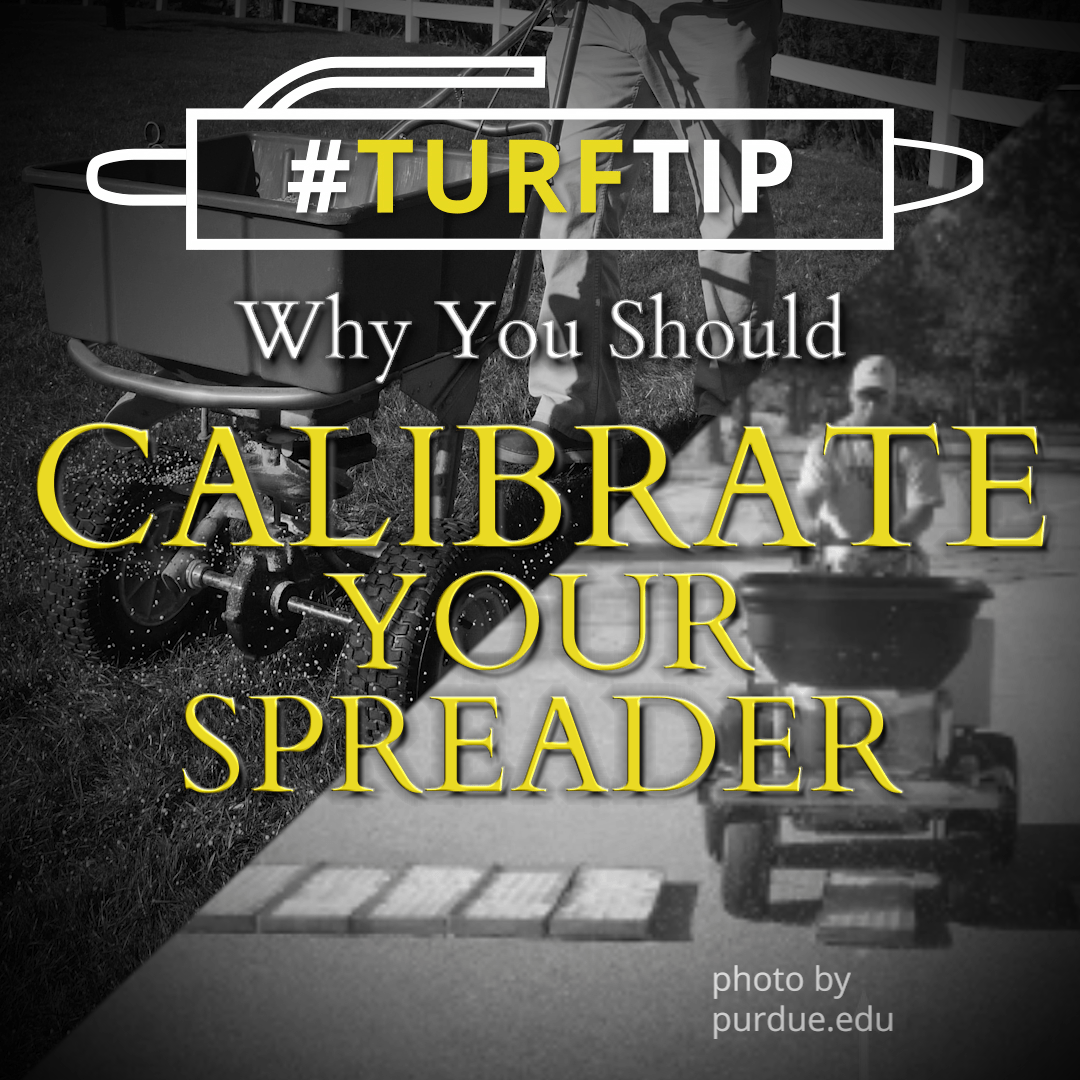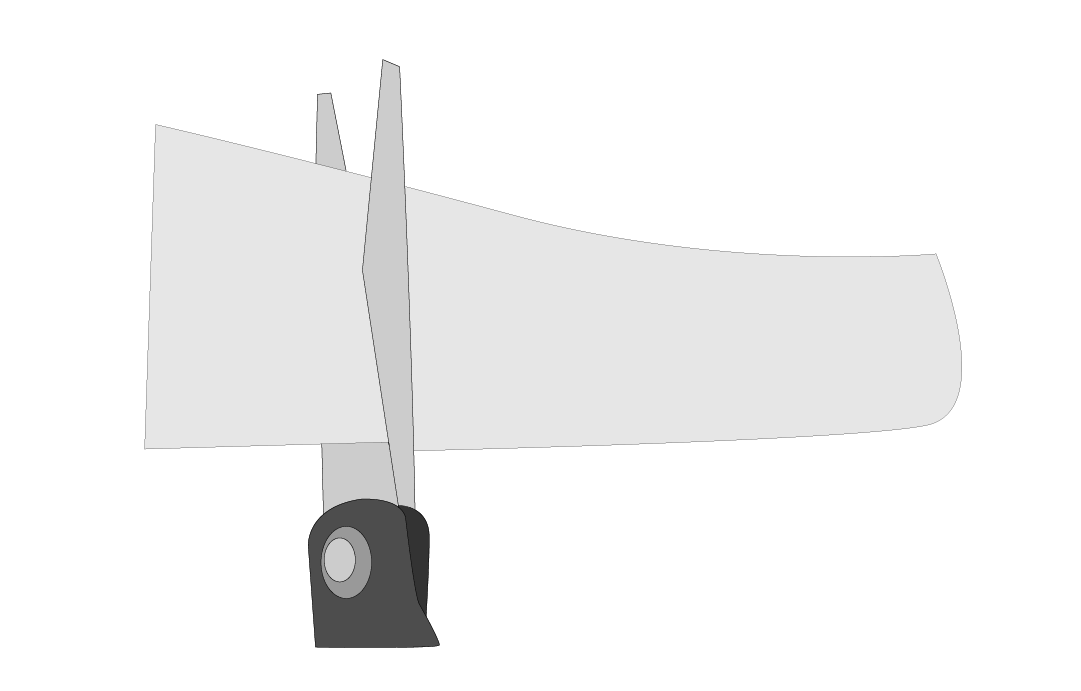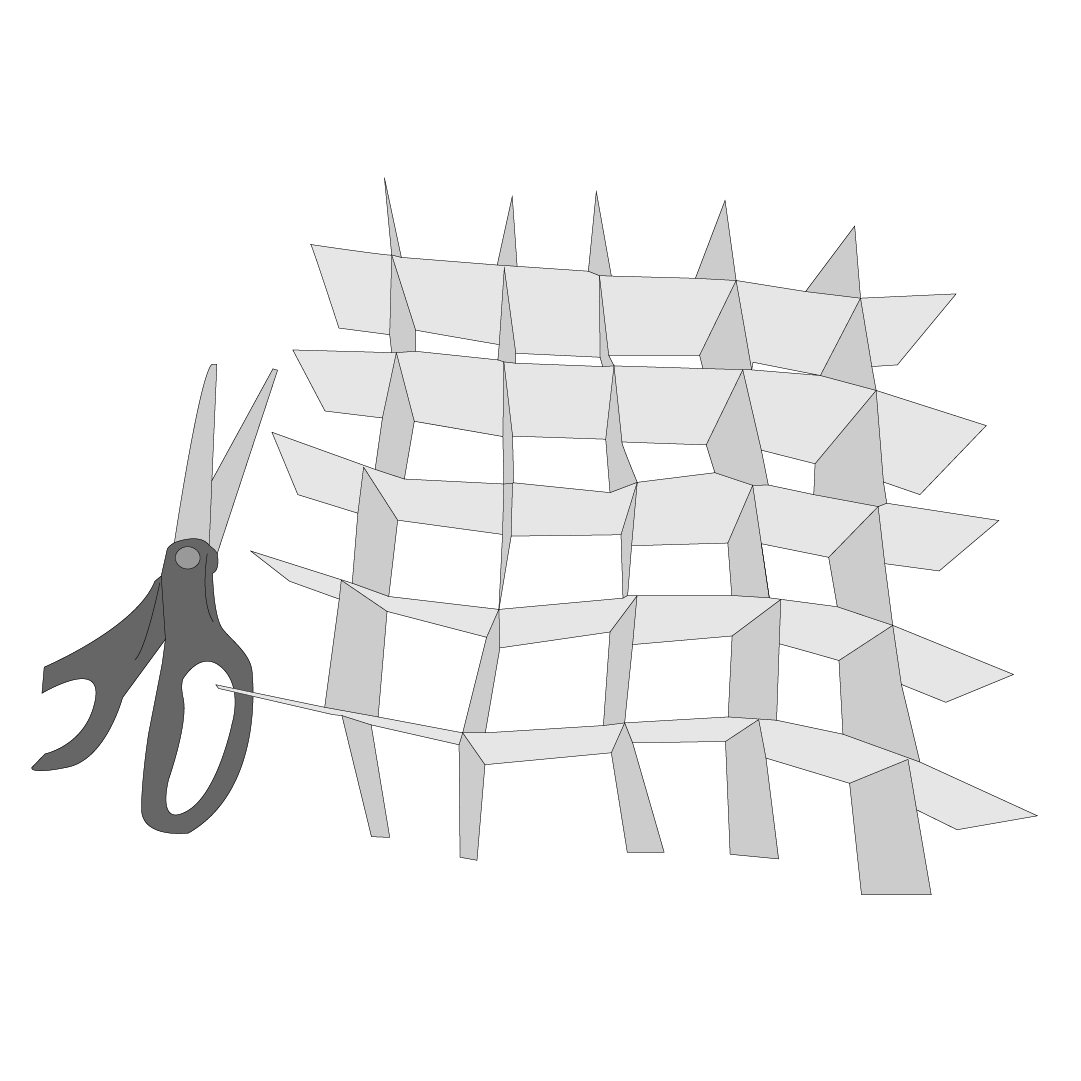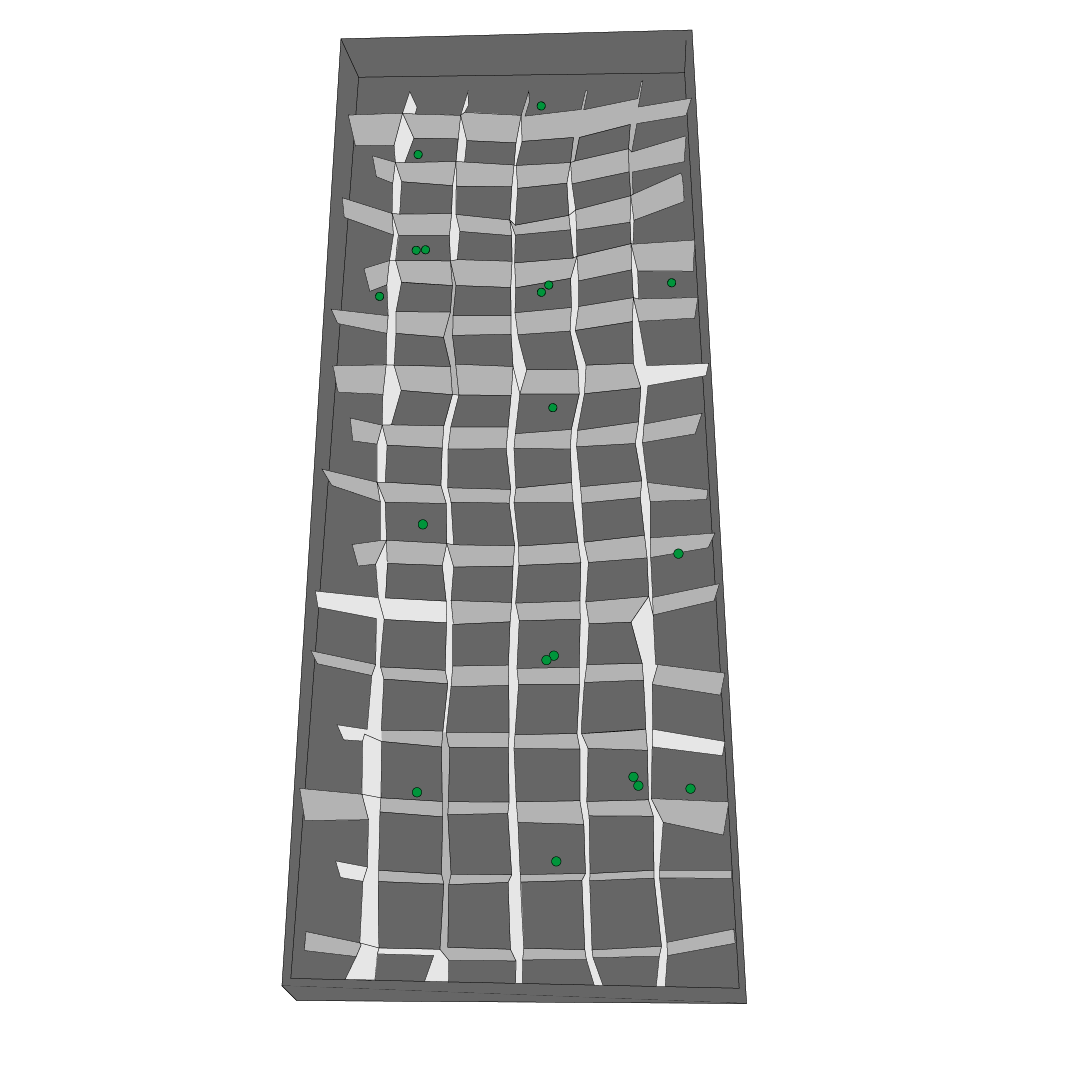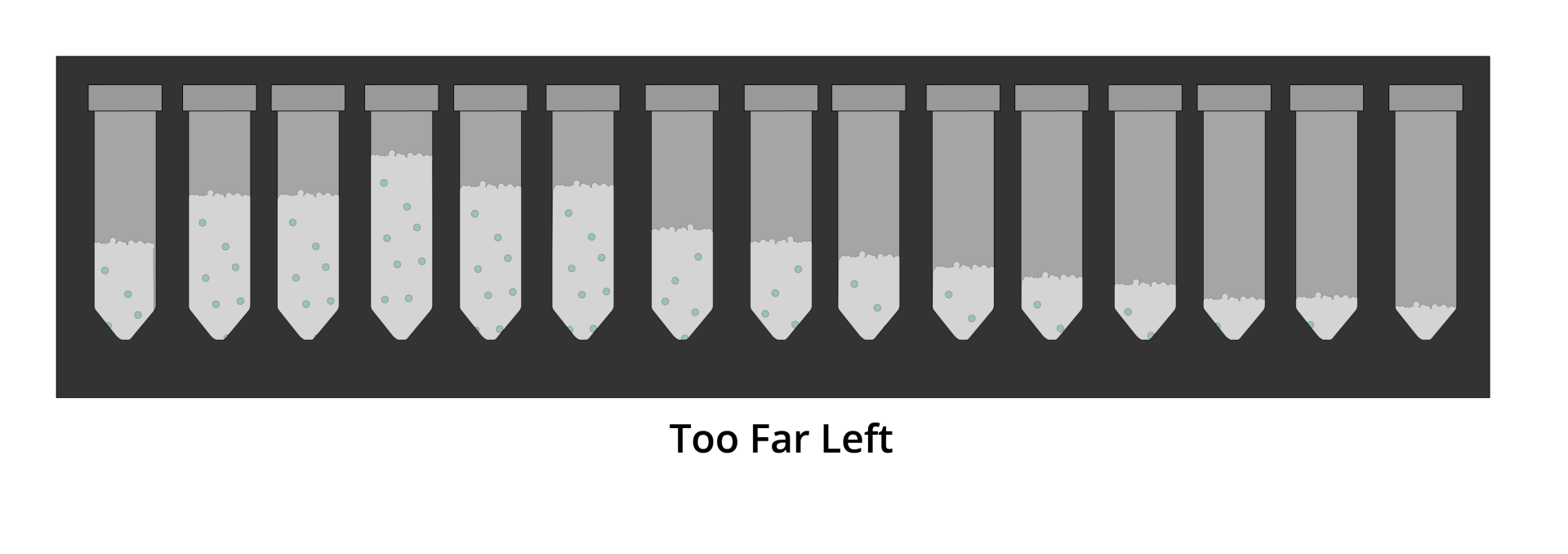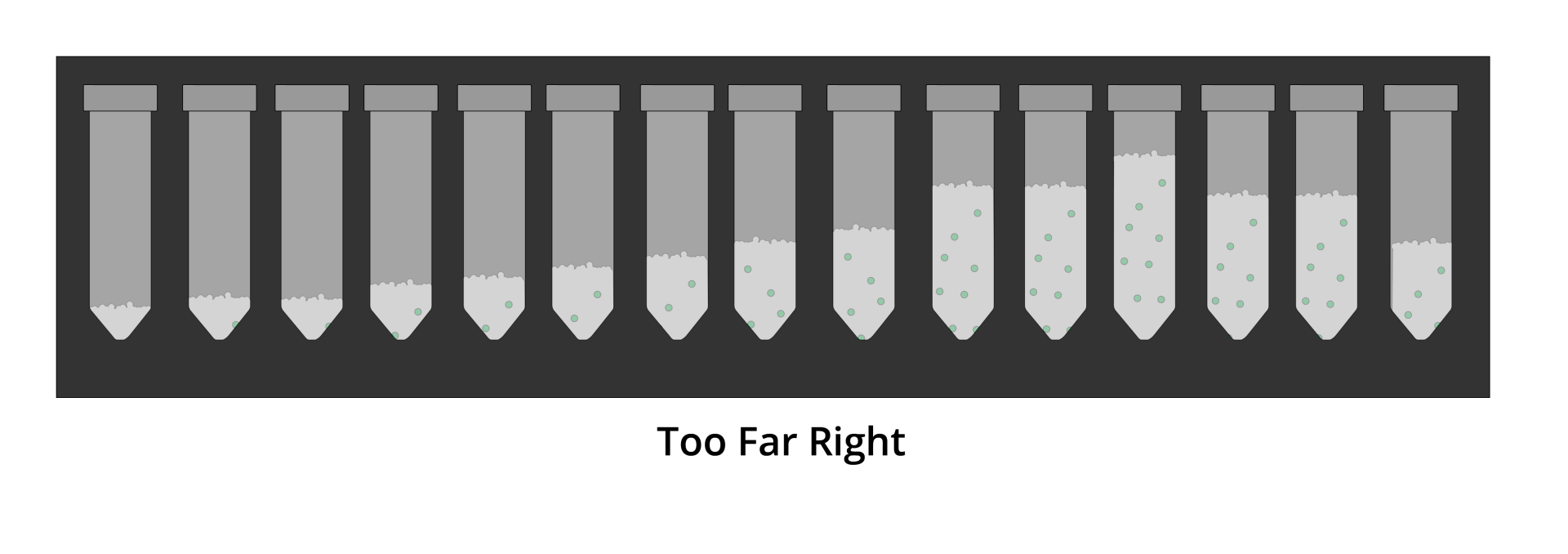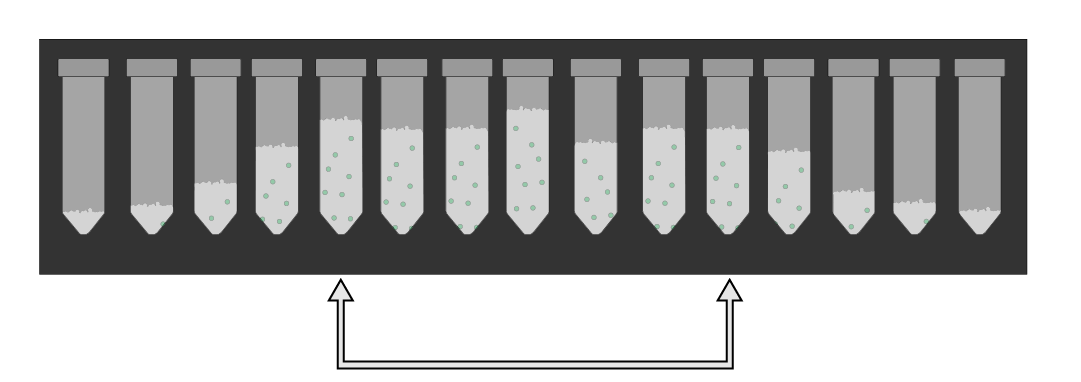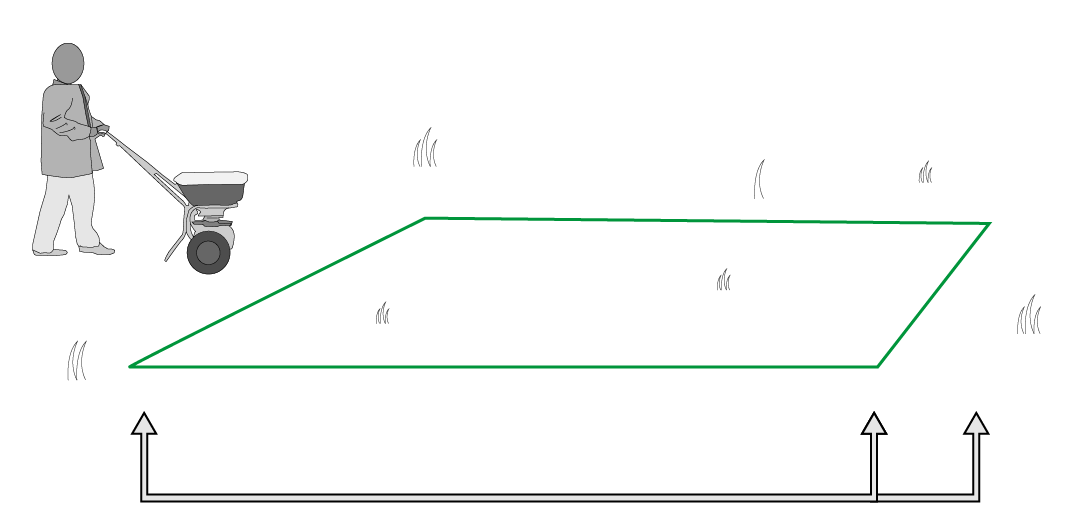By the end of this publication, you will have learned how to check the distribution pattern of your spreader, determine the spreader’s effective spread width, and calculate the best application rate to most effectively apply your fertilizer.
DETERMINE AND ADJUST DISTRIBUTION PATTERN: CREATE SPREADER CALIBRATION KIT
It is very important that the spinner plate distributes the fertilizer product evenly right to left because if one side gets more than the other, over application and turf banding/striping will occur. To determine the pattern of the spreader and get the most uniform application for your granular fertilizer, we must first create some pans for catching your fertilizer and determining the distribution pattern.
- Collect 11-15 boxes or pans - 1 X 3 ft in size, 2 inches deep. (11 boxes if your granules are small; SGN > 150, 15 boxes if your granules are large; SGN < 150).
- Create paper baffles to prevent fertilizer from bouncing out of your box – for each box, cut 30 12 in x 2 in strips of paper, cut slits at 2 inch intervals (each strip should have 5 slits) fit 5 strips across 5 other strips together using the slits, 3 sets of 10 strips should fit in each box.
- Gather 11-15 (11 for small granules, 15 for large granules) clear containers to be used to measure each box’s contents, clear tubes are recommended, but clear cups can be used, please ensure each container can hold 1 to 4 fluid ounces.
- An optional rack/display is recommended to display your containers to assess the pattern efficiently.
DETERMINE AND ADJUST DISTRIBUTION PATTERN: PREPARE AND EXECUTE
Follow these steps to determine and adjust the pattern of your spreader, you will be taking notes of your spreader settings, so have a notepad handy.
- Place boxes side-by-side in a line perpendicular to the spreader’s path. With one box in the middle for the spreader to pass over, there should be sufficient space on either side of the box for the spreader wheels to pass. One box in the middle and then equal number of boxes on both sides evenly spaced apart. Space the boxes up to 12 inches apart depending on the granule size and impeller speed.
- Choose a starting point for your application rate that is similar to your final rate setting, the fertilizer bag should have a suggested setting for your spreader.
- Set an estimate pattern adjustment, (ex. opening size of third hold adjustment, adjusting the sliding gate, or rotating the conical distribution device, depending on model/type of spreader). Initial adjustment is a starting point, further adjustments will be made until fertilizer distribution is uniform.
- Fill hopper at least halfway with fertilizer. Pass over the boxes several times. Note the spreader’s speed, gear, and RPM and any other control so you can maintain it consistently later during applications.
- Time to measure what we’ve collected in the boxes. After you pour the contents of each box into its corresponding container, make sure to leave the boxes in their original places, we will need to measure them later. Arrange the containers in the same pattern as their corresponding boxes, side-by-side, optionally on a tube rack, with the center box’s container also in the center. With all of the containers next to each other, it is easy to see the patterns of your fertilizer distribution and whether it needs adjusting.
- If necessary, adjust the spreader pattern adjustment setting and then repeat steps 4 and 5.
DETERMINE YOUR SPREADER’S EFFECTIVE SPREAD WIDTH
Now that you’ve adjusted the spreader to get equal amounts of fertilizer to the right and left sides of the spreader, it’s time to determine the effective spread width. Use this to determine what width your spreader is effective and how to use it in efficient coverage.
- First, of the collected product in containers, find the two containers on either side of the center container that have about half the product of the center container.
- Then, go to the box on the left side that corresponds to the container that collected half the product.
- Measure the distance between this box and the corresponding box on the right and mark it, that is your effective spread width.
CALCULATE AND APPLY THE PROPER APPLICATION RATE
- Determine the rate in which you want to apply your fertilizer per 1,000 sq. ft. How much nitrogen you need to apply per 1,000 square feet is your rate. For example, a 20-0-0 bag contains 20 percent of Nitrogen per pound. Divide the desired Nitrogen rate by the percentage of Nitrogen the product contains to get the amount of fertilizer to apply. (Ex. 1 lb / 0.20 = 5 lbs of fertilizer).
- Set the length of the calibration course by taking 1000 and divide by effective spread width (measured earlier) (Ex. 1000 ft2 / 11 ft = 91 ft. This means calibration course is 11 ft wide by 91 feet long), place markers at start and finish of calibration course.
- Set a gate opening, based on the fertilizer bag, manufacturer recommendations, etc. This is a starting point for rate calibration.
- Pour the whole bag of fertilizer into the hopper, or a measured amount, the important point is that the amount is exact.
- Apply the product over the calibration course, then use a clean and empty vacuum to vacuum the remaining fertilizer from the hopper and weight the amount. Subtract the empty weight of the bucket, and then how much fertilizer was left in hopper after course run. The total fertilizer amount should be subtracted by what was left in hopper, the remaining lbs is the rate of application. (ex: 25 lbs (total) – 20 lbs (in hopper) = 5 lbs per 1,000 square feet).
- Adjust spreader, if necessary. Repeat step 4 to 5 (to avoid lawn burning, don’t reapply to same calibration course).
- Record the speed, gear, RPM, impeller speed setting (if applicable) and gate opening for future reference.
To learn how to calibrate additional spreaders and sprayers visit: https://ppp.purdue.edu/wp-content/uploads/2016/08/PPP-104.pdf
For professional fertilizers, humic and AMP-XC™ enriched products available, please visit TurfCare’s online Product Catalog.
For green industry professionals or others interested in ordering Turfcare products, please contact our Customer Service to find a distributor near you.
References:
https://ppp.purdue.edu/wp-content/uploads/2016/08/PPP-104.pdf
https://www.siteone.com/medias/sys_master/root/h4c/h77/8919303094302/Lesco-SpreaderDropCalibration.pdf
Turf Care Supply - TurfReport Blog
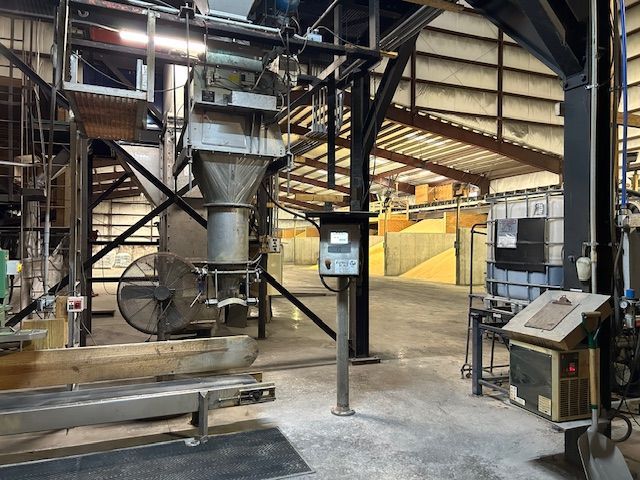
Turf Care Supply, LLC, a portfolio company of Platte River Equity, has officially acquired Beaty Fertilizer, the industry respected Tennessee-based manufacturer and blender of custom granular and liquid fertilizers, as well as combination products. This strategic move expands Turf Care’s manufacturing footprint, adds new product capabilities, and enhances overall production capacity. “The partnership with Beaty Fertilizer marks a major milestone in our journey and an important step forward in our mission to grow, innovate and lead in our industry,” said Mark Mangan, President of Turf Care. “This acquisition is more than just expansion; it’s a powerful opportunity to strengthen our product offerings, broaden our market reach and provide greater value to our customers. By welcoming Beaty into the Turf Care family, we are reinforcing our commitment to excellence and positioning ourselves for an even brighter future.” “We are excited about this next step in the Beaty Fertilizer story. For almost 50 years, our family and our employees have worked hard to serve customers and communities with pride and heart,” said John Beaty, President of Beaty. “Now, we are embracing an opportunity for growth with Turf Care. With our combined know-how and resources, we’ll keep building on what we’ve worked so hard to create and bring even more value to our customers, employees and partners. We truly believe this partnership will keep the Beaty legacy going strong while opening up new doors for growth and innovation.” Tarun Kanthety, Vice President at Platte River, added, “We believe the acquisition of Beaty Fertilizer represents a strategic step in expanding Turf Care’s footprint and product breadth... as it scales and enhances its value proposition to customers.”
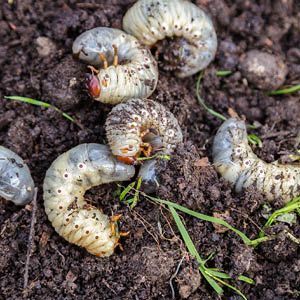
Root out Grubs, Before they Attack Yours! White grubs, the immature stage of several scarab beetles—including Japanese beetles, masked chafers, May and June beetles, and green June beetles—are a major threat to turfgrass across the Southeast. These beetles follow a complete metamorphosis (egg, grub, pupa, adult), with most species completing their cycle in one year. Eggs are laid in early summer, grubs hatch within two weeks, and begin feeding on turfgrass roots through the late summer and fall. May and June beetles differ slightly, with a two- to three-year life cycle and prolonged feeding as third-instar grubs. Grubs damage turf by severing roots, causing grass to yellow, wilt, or lift easily from the soil. Feeding is typically concentrated in patches and worsens during hot, dry weather. Wildlife digging for grubs can create further turf destruction. Healthy turf may tolerate 5–10 grubs per square foot, but damage becomes evident as populations rise or turf is under stress. Early detection and timing are essential. Scouting begins in late June, shortly after adult beetle activity peaks. Monitoring plants favored by beetles can signal egg-laying is underway. Treatment is most effective when small grubs are active—typically from mid-July through early August. For professional turfgrass managers, insecticides containing imidacloprid (Merit®), chlorantraniliprole (Acelepryn®), or trichlorfon (Dylox®) are the most effective tools. The primary months of preventative application of Acelepryn® is from April to end of May and Merit® from April into July - targeting grubs before they hatch. Curative treatments with Dylox® or similar products are applied July through the fall, when young grubs are feeding and most vulnerable. Always follow label directions for optimal application and safety. Timing may vary slightly by regional seasonal needs. Turf Care Supply has a variety of professional TCS Growstar insecticide fertilizers available to protect your turf and prevent grub damage, before it starts. Click on the button below to view products, contact your sales rep for addition TC Growstar products available.
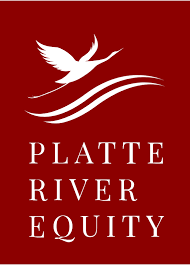
Platte River Equity Portfolio Company Turf Care Supply, LLC Acquires Agri-Nutrients, Inc. Brunswick, OH , October 9, 2024 – Platte River Equity (“Platte River”) portfolio company Turf Care Supply, LLC (“Turf Care”) is pleased to announce its acquisition of Agri-Nutrients, Inc. (“Agri-Nutrients”), a manufacturer and blender of custom granular fertilizers for the turf & ornamental (“T&O”) industry. This strategic acquisition provides Turf Care with an established presence in the south-central United States, an enhanced product portfolio and additional manufacturing capacity. “This acquisition represents much more than a business transaction; it is a strategic step forward in expanding our reach and enhancing our customers’ growth. By bringing Agri-Nutrients into the Turf Care family, we are broadening our product portfolio, expanding our market presence and further positioning ourselves as a leader in providing innovative solutions for our customers,” said Mark Mangan, President of Turf Care. “We are excited about joining the Turf Care team,” said Jim Montgomery, President of Agri-Nutrients. “At Agri-Nutrients, our core values center around customer service and product innovation, and we are confident that this combination will allow us to better serve the needs of our customers.” “Platte River welcomes the Agri-Nutrients team to Turf Care. This transaction underscores our long-term commitment to fostering growth through both organic and inorganic initiatives across the Turf Care platform,” said Tarun Kanthety, Vice President of Platte River. “The partnership with Agri-Nutrients strengthens Turf Care’s value-added offering, creating additional growth opportunities across the combined customer base.” B&A Corporate Advisors served as the exclusive financial advisor to Agri-Nutrients. About Agri-Nutrients Founded in 1992 and based in Catoosa, OK, Agri-Nutrients is a manufacturer and blender of custom granular fertilizers for the T&O industry, predominantly selling into the lawn care, sports turf and golf course end markets. About Turf Care Supply Established in 1974, Turf Care Supply is one of the largest formulators and blenders of urea products to the T&O market. Turf Care has a comprehensive product portfolio of fertilizers, combination products (herbicide/insecticide), soil amendments and enhanced efficiency fertilizer ingredients. Turf Care's products are sold to distributors and blenders serving the commercial, residential and golf end markets. Turf Care operates four manufacturing facilities strategically located throughout the eastern U.S. About Platte River Equity Founded in 2006 and based in Denver, CO, Platte River Equity is a private equity firm focused on investments in established lower middle market operating companies within targeted industrial sectors where it has substantial operating and investing experience. Platte River utilizes prudent capital structures in order to invest in future growth opportunities and withstand changing economic environments. The firm also provides significant ongoing support to its portfolio companies through dedicated resources across functional areas. The firm has raised funds with committed capital in excess of $1.6 billion and is currently investing out of its fifth fund. The Platte River team is the largest collective investor across its funds, deeply aligning the firm with its investors and portfolio company management teams.

